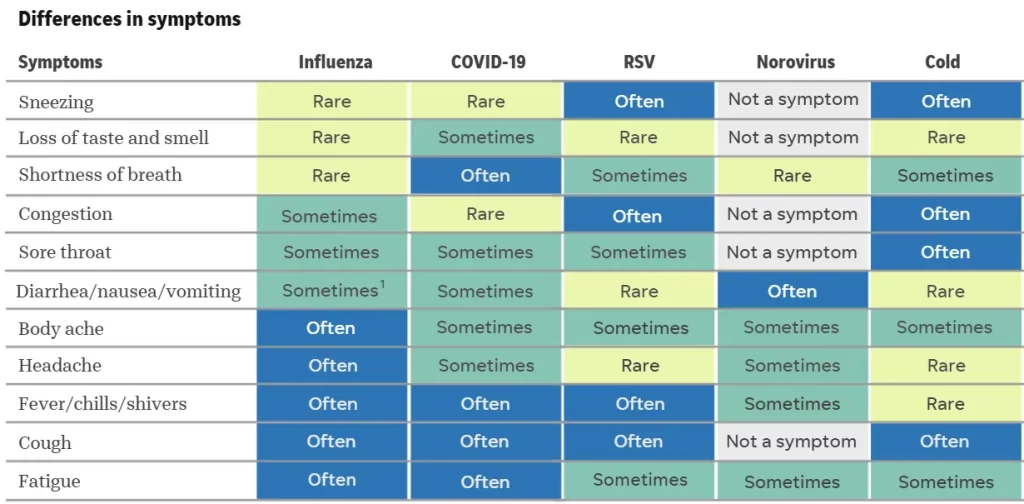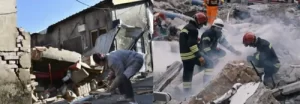
Table of Contents
✨ 4 Viruses on the Rise Across the U.S.
The United States is facing 4 Viruses on the Rise Across the U.S.– a concerning surge in the spread of multiple viral illnesses, causing significant public health challenges. This analysis delves into the specifics of these rising threats, offering actionable insights and preventive strategies.
🚑 Influenza (Flu): A Seasonal Menace
✨ Current Status
The flu is hitting hard across the nation, with the Centers for Disease Control and Prevention (CDC) reporting “very high” activity in several regions.
✨ Impact
- Emergency room visits due to influenza have sharply increased.
- Vulnerable groups such as seniors and individuals with pre-existing conditions are disproportionately affected.
✨ Key Statistics
| Metric | Data |
| Estimated Illnesses | 5.3 million |
| Hospitalizations | 63,000 |
| Deaths | 2,700 |
✨ Hotspots
Regions such as the South and Pacific Northwest are reporting the highest activity levels, marking these areas as critical zones for intervention.

😷 COVID-19: A Persistent Threat
✨ Current Trends
COVID-19 cases and hospitalizations are climbing, raising concerns about a potential resurgence. While the situation remains less dire than previous waves, vigilance is essential.
✨ Key Data
- Nationwide test positivity rate: 7.1%.
- Vaccination uptake for the 2024-2025 season: Only 20.9% of U.S. adults.
✨ Recommendations
- Vaccinate: Ensure updated vaccines are administered.
- Monitor Symptoms: Early detection is key to mitigating severe outcomes.
🏥 Respiratory Syncytial Virus (RSV): A Double Threat
✨ Who Is at Risk?
RSV continues to pose a serious risk to young children and older adults, particularly those over 75 years of age.
✨ Key Challenges
- Hospitalization Rates: Increasing across affected demographics.
- Vaccination Rates: Uptake remains critically low despite the availability of vaccines for older adults.
🧟 Norovirus: The “Stomach Flu”
✨ Symptoms and Spread
Known for causing vomiting and diarrhea, norovirus is the leading cause of gastroenteritis outbreaks in the U.S.
✨ Current Situation
- Higher-than-usual activity across states.
- Impacting schools, workplaces, and communal settings.
✨ Preventive Steps
- Hygiene: Handwashing and surface disinfection.
- Isolation: Staying home during illness to prevent spread.
💉 Preventive Measures to Curb the Surge
🔒 Vaccinate
Vaccination is the first line of defense against these surging viruses. Health experts strongly recommend prioritizing influenza and COVID-19 vaccinations, particularly for high-risk groups such as the elderly, pregnant individuals, young children, and those with chronic illnesses. These vaccines not only reduce the severity of the illness but also help prevent hospitalizations and complications. Clinics, pharmacies, and local health departments often provide free or low-cost vaccination options.
🔒 Practice Hygiene
Good hygiene practices are essential to minimizing the spread of viruses. This includes:
- Frequent Handwashing: Use soap and water, scrubbing for at least 20 seconds, especially after touching shared surfaces or being in public spaces.
- Surface Sanitization: Regularly disinfect high-touch areas such as doorknobs, light switches, and mobile devices.
- Cough and Sneeze Etiquette: Cover your mouth and nose with a tissue or your elbow, followed by immediate handwashing or sanitizing.
🔒 Stay Informed
Staying informed about the latest developments is crucial. Monitor updates from credible sources like the CDC and WHO for real-time data on virus activity, vaccination drives, and local health advisories. Subscribing to health newsletters or alerts can also help you stay proactive.
🔒 Avoid Crowds
Reducing exposure to crowded environments can significantly lower the risk of contracting viruses. This is particularly important during peak seasons. Strategies include:
- Limiting attendance at large events or gatherings.
- Choosing outdoor or well-ventilated venues when socializing.
- Wearing masks in crowded indoor spaces to minimize transmission risks.
📊 Healthcare System Impact
The confluence of these viral outbreaks—referred to as a potential “quad-demic”—threatens to strain healthcare systems nationwide. Hospitals are already reporting increased admissions, particularly in intensive care units.
| Virus | Most Affected Groups | Key Impact |
| Influenza | Seniors, chronic patients | High ER visits, fatalities |
| COVID-19 | General population, elderly | Rising hospitalizations |
| RSV | Children, elderly | Increased ICU admissions |
| Norovirus | All ages | Outbreaks in communities |

🕵️ Frequently Asked Questions
🔹 What are the symptoms of these viruses?
Influenza: Fever, chills, cough, sore throat, muscle aches, fatigue.
COVID-19: Fever, cough, loss of taste or smell, shortness of breath.
RSV: Runny nose, wheezing, difficulty breathing (severe in young children).
Norovirus: Vomiting, diarrhea, stomach cramps, dehydration.
🔹 Who is most at risk?
High-risk groups include seniors, pregnant individuals, young children, and people with chronic health conditions.
🔹 How effective are the vaccines?
Vaccines for influenza and COVID-19 significantly reduce the risk of severe illness, hospitalizations, and death. RSV vaccines are effective for older adults but underutilized.
What are the best hygiene practices to prevent infection?
Regular handwashing, surface disinfection, wearing masks in crowded places, and following respiratory etiquette (covering coughs and sneezes).
🔹 Where can I get vaccinated?
Vaccines are available at local health departments, pharmacies, clinics, and some workplaces. Many locations offer free or low-cost options.
✨ Disclaimer
The information provided in this document is for informational purposes only and should not be considered as medical advice. Always consult a healthcare professional or your local public health authority for guidance specific to your health or region. While every effort is made to ensure accuracy, the data and recommendations are subject to change as new information becomes available.
🕵️ Conclusion
As the U.S. grapples with these simultaneous viral threats, a proactive approach is vital. From vaccinations to hygiene practices, individuals can significantly reduce their risk. For healthcare providers and policymakers, preparedness and public awareness campaigns are essential to mitigate the impact.
Stay vigilant, stay protected, and let’s collectively work toward a healthier tomorrow.
ADVERTISEMENT:











